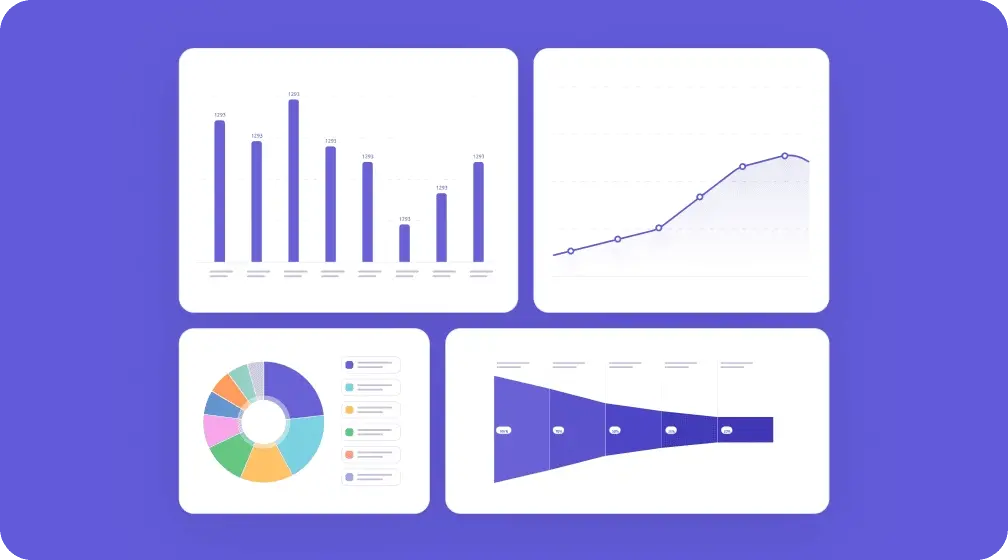Why CRM integration matters (and how to do it right)

Table of Contents:
Choosing the right CRM is a big step for any business – but it’s only the first step. No man is an island, and the same goes for your sales tools; CRM on its own can only go so far. The real power of great customer relationship management software lies in how well it integrates with the rest of your tech stack.
Ready to connect the dots and make your CRM work smarter?
In this article, you’ll read:
- What is CRM integration?
- Why CRM integration matters?
- What are the benefits of CRM integration with other tools?
- How to integrate your CRM with external tools?Why CRM integrations fail (and how you can get it right)
What is CRM integration?
CRM integration means connecting your CRM with the other tools you use – email, calendars, marketing platforms, customer support systems, and more – so data flows automatically between them.
Instead of juggling disconnected apps and manually updating information, everything works together behind the scenes. Your sales team gets one clear, up-to-date view of all customer data without the busywork.
Why CRM integration matters?
Customers are the core of your business – they’re the audience, the judge and, obviously, the crucial source of revenue. You might be offering a state-of-the-art product, but even this alone won’t get you far if you neglect your customers. Once they need to solve a problem, they expect you to be there, ready to help them out. If you manage to meet their needs, they will remain loyal and happy to recommend your services.
This is why customer relationship management should be the backbone of your business. It helps you increase conversion rates and, in the long run, customer retention rates, too. How do you make it work, though?
Think about it: you’re collecting customer data through a wide variety of channels. From call centres and live chats to surveys and simply recording user behaviour, there’s plenty of valuable information you can use to grow your business even faster.
This valuable data can be integrated with your CRM to create an even better customer experience. This way, you’re one step ahead – you already know what your customers might need before they get in touch.
What is the role of a CRM system in your sales cycle?
Benefits of CRM integration with other tools
CRM integration can be helpful in many ways. Here are some of the most prominent areas:
Reason 1: No more manual data chaos
Why: Copying information from one place to another might seem harmless, but over time, it slows down your team and opens the door to errors. With the right CRM integration, your customer data stays accurate, up to date, and always where it needs to be. No more hunting through tabs or fixing typos.
Example: Let’s say your sales team works with Google Sheets to track new leads. Instead of manually adding those to your CRM software, you can connect the two tools so that new entries automatically create deals in your integrated CRM. It’s a quick win that improves data accuracy, speeds up your sales process, and keeps everything flowing in real time.
Reason 2: Unleashing your full potential
Why: Two heads are better than one – when you connect your favourite tools, the whole will become much more than just a sum of its parts.
Example: Your creativity is the limit here. We suggest you try integrating different tools to see what works best for you. You never know what opportunities you might uncover! One of our favourite examples is Sellizer, an automated tool to distribute commercial offers to your prospects. It draws all the necessary data from the sales CRM and makes sending email or SMS campaigns much easier!
Reason 3: Better customer support
Why: Effective customer support needs to be based on data. When the customer talks to you, they expect you to know exactly who they are and what their previous interactions with your company were. With the right CRM integration, your help desk agents will have all the necessary information at their fingertips. This way, you can answer all queries much faster. This is sure to increase customer satisfaction!
Example: Let’s start with simple solutions: you can create a survey in Google Forms to collect answers from your customers and spot any issues they might be facing. Then, the form can be integrated with Livespace for further actions.
Reason 4: Flawless contact management
Why: An essential piece of every CRM, contact management can be improved with the right integrations. Instead of browsing all the possible sources to find that one phone number, you can connect all your tools and have all your contacts listed in one place. Seems like a small thing, but makes life much easier!
Example: For instance, Livespace can be integrated with iPresso. The synchronisation works both ways – contacts that are not included in Livespace are crawled from iPresso, and vice versa. You don’t need to remember about updating every tool separately anymore.
Reason 5: Keeping meeting insights in one place
Why: Let’s be honest – no one remembers every detail from a call. And manually writing down notes? Not always realistic. Integrating with meeting recording tools means those valuable insights are automatically saved and shared. You get to stay present in the conversation, without losing track of what matters.
Example: Integrating Livespace with tools like tl;dv makes sure nothing slips through the cracks. tl;dv serves as your dedicated meeting documentation specialist, capturing every sales conversation across platforms like Google Meet, Zoom, and Microsoft Teams. That way, your meeting takeaways are saved, searchable, and synced directly into Livespace – so everyone stays in the loop.
How to integrate your CRM with external tools
You’ve got the CRM – now it’s time to make it play nicely with the rest of your business systems. But how do you make that happen without getting buried in technical jargon?
No-code tools that make CRM integration easy
Zapier & Make are two of the easiest and most powerful no-code platforms for building integrations. These connector integrations help you automate customer data flow and sync your CRM software with other tools – without writing a single line of code.
Zapier allows you to connect Livespace with more than 1000 applications! Some of the most popular ones include Google Suite, Mailchimp, Hubspot, Zendesk… well, we could go on for much longer. The whole list of available integrations can be found on the Zapier website.
Make (formerly Integromat) gives you more control and flexibility, especially if you like building custom, multi-step workflows. With Livespace’s Make integration, you can automate tasks like creating or editing contacts, updating deals, adding notes, sending internal notifications, or even assigning products to deals.
Take advantage of built-in integrations
No need to reinvent the wheel – many of the tools you already use are likely built to connect directly with Livespace. These out-of-the-box integrations are designed to work smoothly without extra setup or custom development.
Some of Livespace’s integrations are particularly well-developed. You can find a list of our recommendations in the knowledge base.
Go custom with API integrations
Sometimes, off-the-shelf solutions just don’t cover all your business needs. That’s where custom integrations using application programming interfaces (APIs) come in. If your business processes rely on legacy systems, custom code, or complex workflows that span multiple platforms, APIs allow you to connect Livespace with other business systems, third-party applications, or internal tools.
With the Livespace API, you (or your developers) can connect your CRM to virtually any system and create workflows tailored to how your team actually works. And if you’re not sure where to start, our support team is here to help guide you through it!
See also:
- 10 Ways to Empower Your Sales Team
- 8 best sales management software (with user opinions)
- Useful tools to structure and organize work in a growing company
Sales process guide for sales managers
Why CRM integrations fail (and how you can get it right)
CRM integration can do wonders for your business – but only if it’s done with intention. Too often, businesses rush into integrating their CRM system with multiple platforms and third-party apps without a clear strategy. The result? Disconnected systems, data silos, frustrated teams, and… lost deals.
Let’s look at the most common reasons CRM integrations fall short, and how you can avoid them.
Want to skip the guesswork? Book a quick demo with our team to see how Livespace supports smooth, scalable CRM integrations – tailored to your tools, workflows, and business goals.
No clear goal or plan
Integrating your CRM with business tools just for the sake of it won’t move the needle. Whether you’re in e-commerce, B2B sales, or customer service, you need to know why you’re integrating. Is it to improve customer data accuracy? Personalize and automate sales efforts? Streamline your sales pipeline?
Get it right: Identify your business needs first. Define what success looks like, whether that’s more efficient sales processes, better visibility into customer behavior, or smoother data flow between systems.
Ignoring data quality
If the CRM data you’re feeding in is outdated, duplicated, or scattered across multiple systems, integrations won’t help; they’ll just spread the chaos. Inconsistent customer records, purchase history, and feedback can lead to poor decisions and missed chances to improve customer interactions.
Get it right: Clean your data before you start. Unify your customer information across platforms, and use integration tools that support real-time data synchronization.
Choosing the wrong integration method
Not every integration method is right for every business. Relying only on built-in integrations or plug-and-play tools might limit what you can actually achieve. On the flip side, jumping straight into custom code without a clear scope can create long-term maintenance headaches.
Get it right: Use the aforementioned no-code platforms like Zapier or Make for quick wins and lightweight workflows. For more complex needs, consider custom integrations using APIs (application programming interfaces) with support from software developers or IT. Always match the method to your goals and tech stack.
Forgetting the user experience
Your CRM system should make life easier (not harder!) for your sales reps and marketing teams. If your integrated CRM is clunky, confusing, or adds more steps to their daily routines, chances are they’ll find workarounds or ignore it altogether.
Get it right: Involve your team early in the integration process. Show how connecting different systems can save time, surface relevant data faster, and help them better engage with potential customers.
Skipping testing and follow-through
Many businesses integrate software tools and assume the job is done. But without ongoing monitoring, errors in customer records, failed data syncs, or broken business processes can fly under the radar.
Get it right: Test every integration thoroughly, especially when connecting core systems like CRM software, ERP systems, or accounting software. Schedule regular check-ins to make sure everything’s still working as expected.
IMAGE
Choosing a CRM – 10 common mistakes and how to steer clear of them
Key takeaways
As you can see, CRM software can be particularly beneficial for your business if you connect it with other tools.
So, what are the next steps you can take?
Start by reviewing your current toolset. Which systems are siloed? Where are you wasting time on manual updates? Identifying those gaps is the first step toward better automation and a more connected business.
Not sure where to begin?
Book a quick demo with our sales team — we’ll walk you through how Livespace can support your automation strategy and help you get the most out of your CRM.
Other posts

The Ultimate Guide to Discovery Calls That Close Prospects

Turning ‘No’ into ‘Yes’: How to Convince Your Customers to Buy from You?








